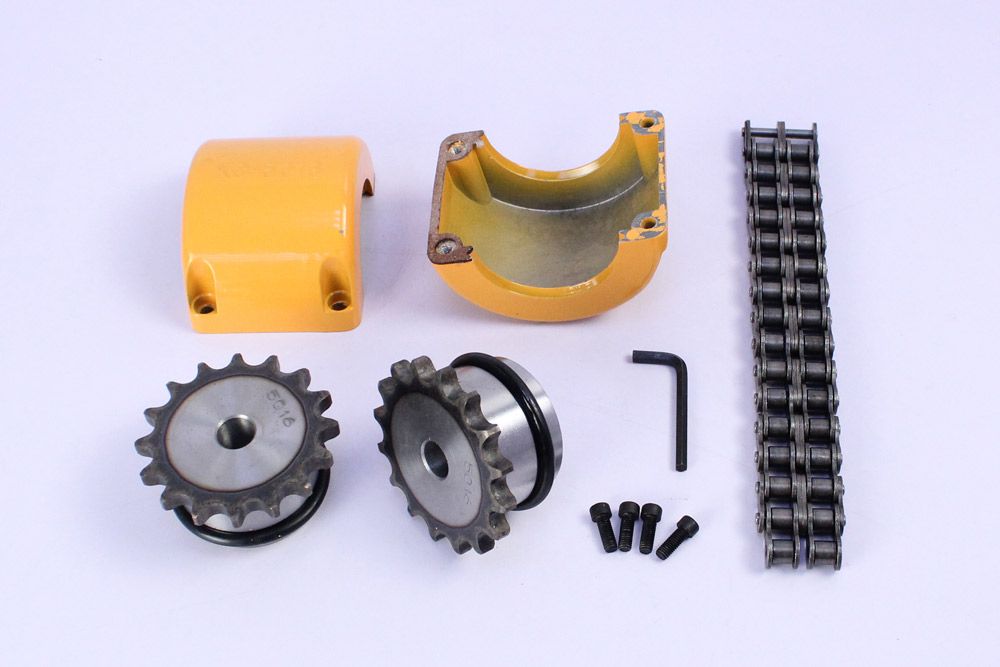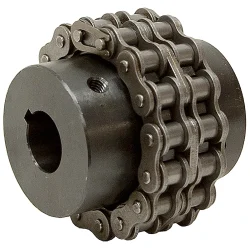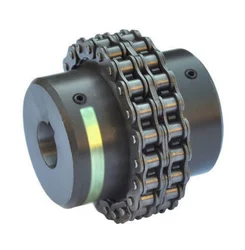وصف المنتج
SG7-GL nobengr carbon steel Coupling roller chain coupling
1. Product description :
| مادة: | Carbon Steel | |||
| التطبيقات: | Automation equipment and Servo Motor , CNC machine . Industrial large-scale cabinet, oven, test chamber , Container. Truck. |
|||
| Biological medical equipment, Lab equipment , Vehicle.Cabinet | ||||
| Surface Finishing: | Brightness chrome plated, Polishing | |||
| Installation: | Easy to install, Left and right side install | |||
| سمات: | Durable, Secure, High Quality | |||
| Advantages: | 1.Variety types fpr selection, prompt deliver | |||
| 2.Well-equipped with extensive sales network | ||||
| 3.Advanced Production equipment and production technique) | ||||
| 4.Competitive Price(Factory direct price)with our good service | ||||
| 5.Different designs are available according to customers requests | ||||
| 6.Excellent quality testing equipment,100% inspection on critical dimension | ||||
| Quality Controlling: | ||||
| 1.QC control:100% inspection on critical dimension | ||||
| 2.Chek the material before the production | ||||
| 3.Have the random inspection during the productipn | ||||
| 4.Make the 100%inspection before the shipment | ||||
2. Drawing and picture
3. Company information :
4. Contact us :
/* January 22, 2571 19:08:37 */!function(){function s(e,r){var a,o={};try{e&&e.split(“,”).forEach(function(e,t){e&&(a=e.match(/(.*?):(.*)$/))&&1

What are the common materials used in chain couplings?
Chain couplings are commonly made from various materials that offer the necessary strength, durability, and wear resistance required for transmitting torque between shafts. The choice of materials depends on factors such as the application requirements, operating conditions, and the specific design of the coupling. Here are some common materials used in chain couplings:
- Steel: Steel is one of the most widely used materials for chain couplings. It offers excellent strength, toughness, and resistance to wear and fatigue. Carbon steel and alloy steel are commonly used, with alloy steel providing enhanced properties such as higher tensile strength and improved corrosion resistance.
- Stainless Steel: Stainless steel is chosen for chain couplings when corrosion resistance is a critical requirement. It offers good mechanical properties along with resistance to rust and corrosion, making it suitable for applications in harsh environments or where exposure to moisture or chemicals is present.
- Cast Iron: Cast iron is occasionally used for chain couplings, particularly in applications where cost-effectiveness and moderate strength are important factors. Cast iron provides good wear resistance and can withstand moderate loads and operating conditions.
- Bronze: Bronze is utilized in certain specialized chain couplings, especially in applications where self-lubrication and high resistance to corrosion are required. Bronze has good friction properties and can operate in conditions where lubrication may be limited or unavailable.
- Plastics: In some cases, certain plastics, such as nylon or polyurethane, are used for chain coupling components like chain guides or protective covers. Plastics offer low friction, noise reduction, and resistance to chemicals, making them suitable for specific applications.
It's important to note that the materials used in chain couplings may vary depending on the specific manufacturer, coupling design, and application requirements. It is recommended to consult the manufacturer's specifications and guidelines to determine the appropriate materials for a particular chain coupling.
Additionally, in some cases, chain couplings may incorporate a combination of different materials, such as steel for the sprockets and roller chain, and elastomers for the flexible elements. This hybrid construction allows for optimized performance, balancing strength, flexibility, and damping characteristics.
Overall, the selection of materials for chain couplings is crucial to ensure reliable and efficient power transmission while considering factors such as load capacity, operating conditions, and the desired service life of the coupling.

How does misalignment affect chain couplings?
Misalignment in chain couplings can have detrimental effects on their performance and lifespan. Here are some ways in which misalignment can affect chain couplings:
- Increase in Load: Misalignment puts additional load on the coupling components. When the shafts connected by the coupling are not properly aligned, the coupling must compensate for the angular, parallel, or axial misalignment. This increased load can lead to excessive stress and premature wear on the coupling components, such as sprockets, roller chain, and connecting pins.
- Uneven Load Distribution: Misalignment can cause an uneven distribution of load across the coupling. As a result, some sections of the coupling experience higher stresses than others. This uneven load distribution can lead to localized wear and fatigue, reducing the overall strength and reliability of the coupling.
- Reduced Power Transmission: Misalignment affects the efficiency of power transmission through the coupling. When the shafts are not properly aligned, there is increased friction and slippage between the roller chain and the sprockets. This slippage reduces the amount of power transferred from one shaft to another, resulting in a loss of efficiency and a decrease in the overall performance of the machinery or equipment.
- Increased Wear: Misalignment can accelerate wear on the coupling components. The misalignment causes the roller chain to operate at an angle or with excessive tension, causing additional stress and wear on the chain links, sprocket teeth, and connecting pins. The increased wear can lead to chain elongation, loss of engagement with the sprockets, and ultimately, coupling failure.
- Noise and Vibration: Misalignment often results in increased noise and vibration during operation. The misaligned coupling generates additional vibrations and impacts, leading to excessive noise and potential damage to the coupling and surrounding equipment. These vibrations can also propagate through the connected machinery, affecting its overall performance and reliability.
To mitigate the negative effects of misalignment, it is crucial to ensure proper alignment of the shafts and the chain coupling during installation and periodically check and adjust the alignment as needed. Proper alignment minimizes stress on the coupling components, maximizes power transmission efficiency, and extends the service life of the chain coupling.

ما هي عيوب وصلات السلسلة؟
-
الارتداد: قد تظهر وصلات السلسلة درجة معينة من الارتداد أو الالتواء بسبب الخلوص بين بكرات السلسلة وأسنان العجلة المسننة. وقد يؤدي هذا إلى انخفاض الدقة والضبط في التطبيقات التي تتطلب التحكم الدقيق في الحركة.
-
الضوضاء والاهتزاز: قد يؤدي الالتحام بين السلسلة والعجلات المسننة إلى توليد ضوضاء واهتزاز أثناء التشغيل. وقد يكون هذا مشكلة في التطبيقات التي يكون فيها تقليل الضوضاء أمرًا مهمًا أو حيث يمكن أن يؤثر الاهتزاز المفرط على أداء الآلات أو سلامتها.
-
متطلبات الصيانة: على الرغم من أن وصلات السلسلة سهلة الصيانة نسبيًا، إلا أنها لا تزال تتطلب عناية منتظمة. يعد تشحيم السلسلة والعجلات المسننة أمرًا ضروريًا لتقليل التآكل والاحتكاك. بالإضافة إلى ذلك، فإن الفحص الدوري وضبط شد السلسلة ضروريان لضمان التشغيل السليم. يمكن أن يؤدي إهمال مهام الصيانة إلى التآكل المبكر وانخفاض الكفاءة وفشل الوصلة المحتمل.
-
المساحة والوزن: تشغل وصلات السلسلة قدرًا معينًا من المساحة بسبب وجود العجلات المسننة وطول السلسلة. وفي التطبيقات التي بها قيود على المساحة، قد يحد حجم الوصلة من قابليتها للاستخدام. بالإضافة إلى ذلك، يمكن أن يكون وزن مكونات الوصلة عاملاً مهمًا في التطبيقات حيث يكون تقليل الوزن أمرًا مهمًا.
-
القيود في التطبيقات عالية السرعة: قد تكون لوصلات السلسلة قيود في التطبيقات عالية السرعة. فعند السرعات الدورانية العالية، قد تزداد القوى الطاردة المركزية المؤثرة على السلسلة والعجلات المسننة، مما قد يتسبب في حدوث إجهاد وتقليل كفاءة الوصلة. في مثل هذه الحالات، قد تكون تصميمات الوصل البديلة، مثل وصلات التروس أو الأعمدة المرنة، أكثر ملاءمة.
-
التآكل وعمر الخدمة: مثل أي مكون ميكانيكي، تخضع وصلات السلسلة للتآكل بمرور الوقت. يمكن أن تتعرض السلسلة والعجلات المسننة للتآكل والإطالة التدريجيين، مما يتطلب الاستبدال في النهاية. تعتمد مدة خدمة وصلة السلسلة على عوامل مثل ظروف التشغيل وممارسات الصيانة وجودة المكونات المستخدمة.
على الرغم من أن وصلات السلسلة تقدم العديد من المزايا، فمن المهم مراعاة هذه العيوب وتقييم تأثيرها بناءً على متطلبات التطبيق المحددة. يمكن أن تساعد الصيانة المناسبة والفحص الدوري والنظر بعناية في عوامل التصميم في التخفيف من هذه العيوب وضمان الأداء الأمثل وطول العمر لوصلات السلسلة.


editor by CX 2024-03-02
